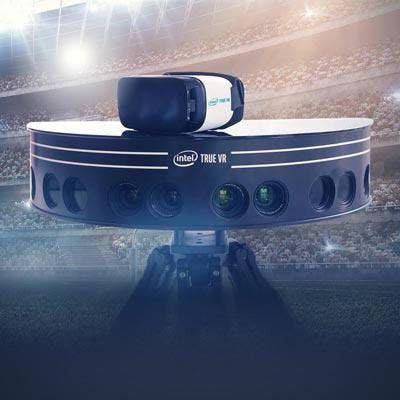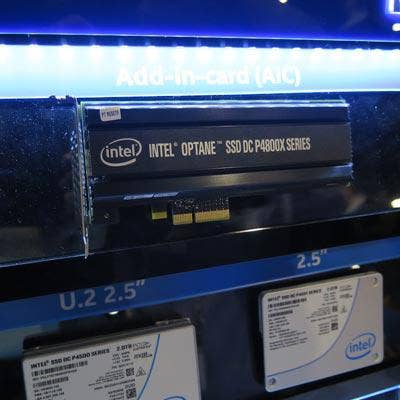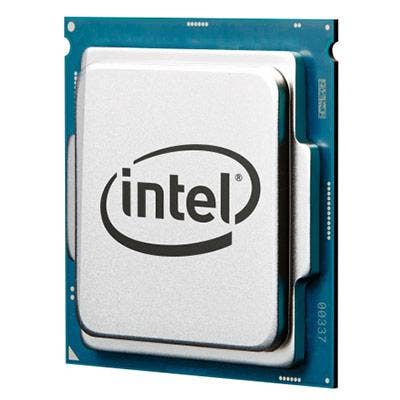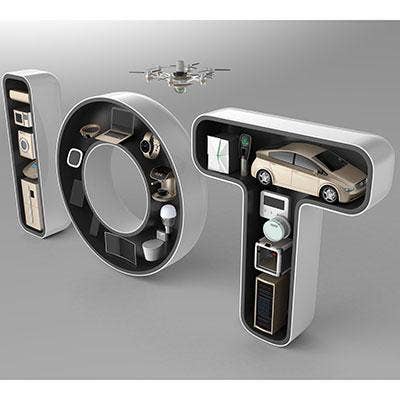Intel U.S. Channel Chief Kimrey On Why Partners Should Chase Opportunities In AI, IoT And Memory
'Our Strategy Mirrors Our Partner Strategy'
With Intel's 50-year anniversary less than a month away, the semiconductor giant is at a pivotal point in its history -- something that U.S. channel chief Jason Kimrey is very much aware of.
While the Santa Clara, Calif.-based company searches for its next leader following last week's resignation of CEO Brian Krzanich, Kimrey, Intel's general manager of U.S. channel scale and partners, is busy taking the message of the company's data-driven transformation to channel partners as Intel's data-centric businesses reach half of total revenue.
"I always tell our partners that I really feel like our strategy mirrors our partner strategy," Kimrey said in an exclusive interview with CRN. "The growth opportunities that we're trying to capitalize on today are those same growth opportunities that our partners should be capitalizing on."
Those growth opportunities include memory, artificial intelligence and Internet of Things, all of which fall under Intel's data-centric businesses, which increased sales 25 percent year-over-year in the first quarter while its legacy PC business only grew 3 percent.
"But then on the other side you've got one of the greatest PC refresh opportunities we've seen in years and especially if you look at what's happening in corporate," Kimrey said.
What follows is the first of a two-part interview CRN conducted with Intel in late May.
Why do you see this as one of the greatest PC refresh opportunities?
You've got a couple things: one, you've got [Windows 10] and [Windows 7's] end of life. You've also got some of the best form factors, things like two-in-ones, and better battery life and better capability than ever before. You've also got just an aging PC fleet. I'd have to pull up the exact numbers, but there's tens of millions of PCs in the marketplace that are over five years old and just aren't getting the job done. So, you've just got kind of this aging PC fleet when people need to get work done faster, create content, more now than ever before. We see it playing out in our client numbers. If you look at the large OEM vendors -- HP, Lenovo -- everyone's PC numbers are up. And then the partners -- anyone that's in that business is showing growth right now, especially strong growth in corporate. On the consumer space, we're so pumped about [augmented reality], [virtual reality] and what's happening in gaming is un-freaking-believable right now. I believe that more and more are looking at the PC platform as the target gaming device that they want to run their games on. So, I think there's tremendous growth opportunities both in corporate refresh, but also in consumer.

Do you see 5G as a refresh opportunity for laptops?
Longer term, as you get to 5G modules and modems down in the platform. 5G, I think right now, is about building the infrastructure to enable it. So right now, I think we see a lot of that opportunity in working with the carriers and kind of building out the infrastructure to make it ubiquitous. But as that happens, right now the only way we handle the amount of data that's going to be coming online in the next five years, we have to have a network that has more capability than what's out there today, so that's why 5G is so important. I think as this plays out, I don't know if it creates a refresh opportunity, but it's certainly going to become pervasive in all the new devices.

You're expecting more PCs to be 5G connected once 5G is ubiquitous?
I would think so.
Because right now a lot aren't LTE connected.
The reality is, we're still going to see Wi-Fi has got a long future and I think that's why you haven't -- Wi-Fi has been good enough -- so I think they're going to co-exist for a long time.
But there was the announcement of Intel and Sprint planning to release a few 5G-connected PCs next year.
I think the market will ultimately dictate, is Wi-Fi good enough? Or is having 5G good enough? From everything I've seen, 5G provides another level of user experience. And to get the bandwidth to bring the amount of data that's going to be generated down to your system, that would seem like that would be the best.

You mentioned AR and VR, do you see a strong enterprise future for that as well, or is that really on the consumer side?
I think it's use case dependent. In training, we're already seeing it in some of the trainings in simulation-type environments. Health care, we see it with surgical theater in some of those types of use cases. I don't think it's going to become pervasive throughout the enterprise, but I think in target segments, like training, any sort of simulated environments, I think there's a lot of potential for that.

How are Intel's priorities changing for channel partners? Where should they invest?
At a high level, Intel's going through this transformation from PC-centric to a data-centric company -- and there's markets that we're going to continue to, that we want to continue to feed, and, like the PC business, like our data center business, we think that creates unbelievable opportunities for all of our partners. There's also these incredible growth opportunities: where we believe the market's going to go and the markets that people are going to have to have competencies in to be able to take advantage of where the growth is going to happen.

Where's the opportunity in memory?
We're kind of at this inflection in the memory space -- with our introduction of things like Optane and persistent memory, what's going to be called Optane Data Center -- where there's a fundamental shift in capabilities that are going to be provided by the amount of memory that's available down at the silicon level or down at the hardware level. We believe that creates an opportunity for channel partners to become more proficient in these technologies and then helping customers down the path of adopting these. Because for us to be able to handle the amount of data that's going to be coming, we often talk about, we've become very predictable in terms of our CPU performance and that's how we're going to do that. But for us to really handle the amount of data that's coming in, there's investments that we've had to make to really handle what's coming.

What about other opportunities?
One is in memory. The next is in FPGA [field programmable gate array] and accelerator technology. And the third is all around 5G, because we feel like these are the investments that happen around our core CPU technology that customers are really going to need to take their solutions to the next level. And that starts to play out in areas like analytics and machine learning and artificial intelligence, so I would say that I think there's opportunities with Intel to one, capitalize on core businesses that we're seeing tremendous growth opportunities in both the client and the data center, but there's programs and initiatives that we have in [Intel's Internet of Things Group], in memory with our [Non-volatile Solutions Group], and even our New Technology Group, NTG. Really working closely with us to understand the strategy and opportunities that these new platforms and technologies present -- I think that's where the future growth is really going to come from in the channel.

Where is Intel with adoption of FPGAs?
It's still early. I mean FPGAs still have a long history of being used for special purpose ASICs. I'll tell you what we've seen is the cloud community really started to adopt FPGAs. Microsoft Azure announced their use of an instance around using FPGAs, and I think that support of accelerators is critical, so I think that's really starting play out, and you see our accelerator business grew double digits in Q1 year-over-year.
What about memory?
The memory space, you've kind of got two pieces of it. You've got the solid-state drives and NAND, which is our biggest [part]. Everyone's biggest challenge there has been supply. Supply is getting healthier there, and we see tremendous opportunities, and you're starting to see some really incredible form factors that our new memory technologies are making possible. The one that I love is the ruler SSD. If you've seen this, some of our partners are starting to do reference design builds -- the vision is a petabyte of storage in a 1U [server] rack, so multi-terabyte ruler SSD drives you can line up into a 1U chassis to create [...] soon up to a petabyte of storage.
It's a new paradigm of capability that's provided in storage, and I think some of the investment we're making in this space [is] to really capitalize on what needs to happen, which is [that] we have to bring more data closer to the edge. So that memory business continues to do well, and I think the New Technology Group --the drones -- it's just an exciting area to talk about. It's a business opportunity; it's also art of the possible. I think it just really just opens people's eyes as to what's possible through new technologies.
How important it is to get an alignment in Optane, FPGA and 5G? What's the risk to partners who don't move into IoT and other technologies?
In the data center, more and more workloads are going to the cloud, and […] solution providers have to change and transform the same way that Intel has. Everything is moving towards "as a service," and I think we have to start looking at these new computing paradigms that are creating completely new revenue models for channel partners. So I think it's critical to understand what is going to drive the growth in the future years, and if you look in hardware spend, more and more, significant growth year-over-year is going to be through artificial intelligence.
So anyone that's in the business of selling compute capabilities has to start building out a data science and analytics practice to start capitalizing where the market's going. We're building out the structure, we added an AI track to our [Intel Technology Provider] program, we're putting programs in place to help our channel partners start to skill up and build capabilities in and around artificial intelligence, because that is clearly where is one of the next big waves of growth is going to happen. You're going to see us do more and more in market around the Intel advantage in that space, and I think anyone that ignores that opportunity should do so at their own peril.

How are you driving adoption for Internet of Things?
We're seeing great growth year-over-year in our IoT business. I still think the thing that's holding back broad adoption of IoT solutions in the market is complexity. The thing that our channel partners excel in is reducing complexity for their customers. I think [this] is one of the greatest services opportunity and service software and hardware opportunity that we've seen because there's too much complexity in deploying everything from predictive maintenance to condition-based monitoring to field-force automation solutions today because you have lots of disparate technologies that need to work together to solve a business problem.
We're doing a lot on our side to make this technology integrate much more seamlessly together. We're bringing a lot of new partners into our ecosystem through things like Market Ready Solutions, but the opportunity is for our partners to take these Market Ready Solutions and bring those to their customers, reduce the complexity and reduce the time-to-deployment to get to faster time-to-value for their customers. So I think IoT is just this tremendous opportunity to transform business processes. And I think it's a tailor-made opportunity for anyone that's a solution provider.

How is this a "tailor-made opportunity" for partners?
What we are doing is creating what we're calling Market Ready Solutions [and IoT RFP Ready] Kits to basically take the complexity out and create these recipes or cookbooks of IoT solutions that have been deployed in production and give solution providers an opportunity to take those and rapidly deploy those to their customers. We're working closely with distribution to become more solutions aggregators and then working with the channel to make these capabilities available.

How has reception been from partners for these Market Ready Solutions?
I think the reception is great. There's almost 70 Market Ready Solutions in market today. Some customers and partners are latching onto [them] right away. Some are more specific towards a specific vertical in a specific use case […] while some are a little more general purpose. I think the reception and the interest from the partner community is off the charts. Everyone recognizes that they don't have all the answers to deploying a complex IoT solution and the thing that they need more than anything is help reducing that complexity and making it easier to deploy. We're always interested in ideas and we want to bring more into the fold. I would just say if there are partners that have solutions they want to bring in, we absolutely want to have those conversations.

Are these solutions helping partners move faster out of the proof-of-concept stage?
What we see in a lot of these solutions is that you got lots of different parts that aren't pre-integrated or pre-configured, so people are having to negotiate five different contracts with five different vendors to solve a specific problem, and all that does is drag out the time to deployment. So one of the things we're trying to do with some of our distribution partners is create this solution aggregation concept where they actually start to bring on, in some cases, non-traditional IT partners into distribution so they can make it easier for a solution provider in a single package to go up and deploy that. It's more cost effective, so it's a pre-set bundle as opposed to individual contracts you have to onboard.

What percentage of the IoT process do you think is now taken care of by Market Ready Solutions?
70 percent. It depends. Some are more out-of-the-box than others. One that seems to be getting a lot of interest and traction is the Dell B5 Intel Market Ready Solution for public safety and surveillance, and there's great information on our Market Ready Solutions website about it.
How are you incorporating the partner viewpoint as far as which Market Ready Solutions you're introducing?
We've got some [Market Ready Solutions] that are done with partners like Accenture and Capgemini, where they brought solutions to us that have come from a consultant/solutions system integrator. [In some cases,] we get feedback directly from end-customers around solutions. As we build out that portfolio I think we're taking guidance and feeding it not only from our own salesforce […] but from everyone, [including global system integrators, ODMs and OEMs].